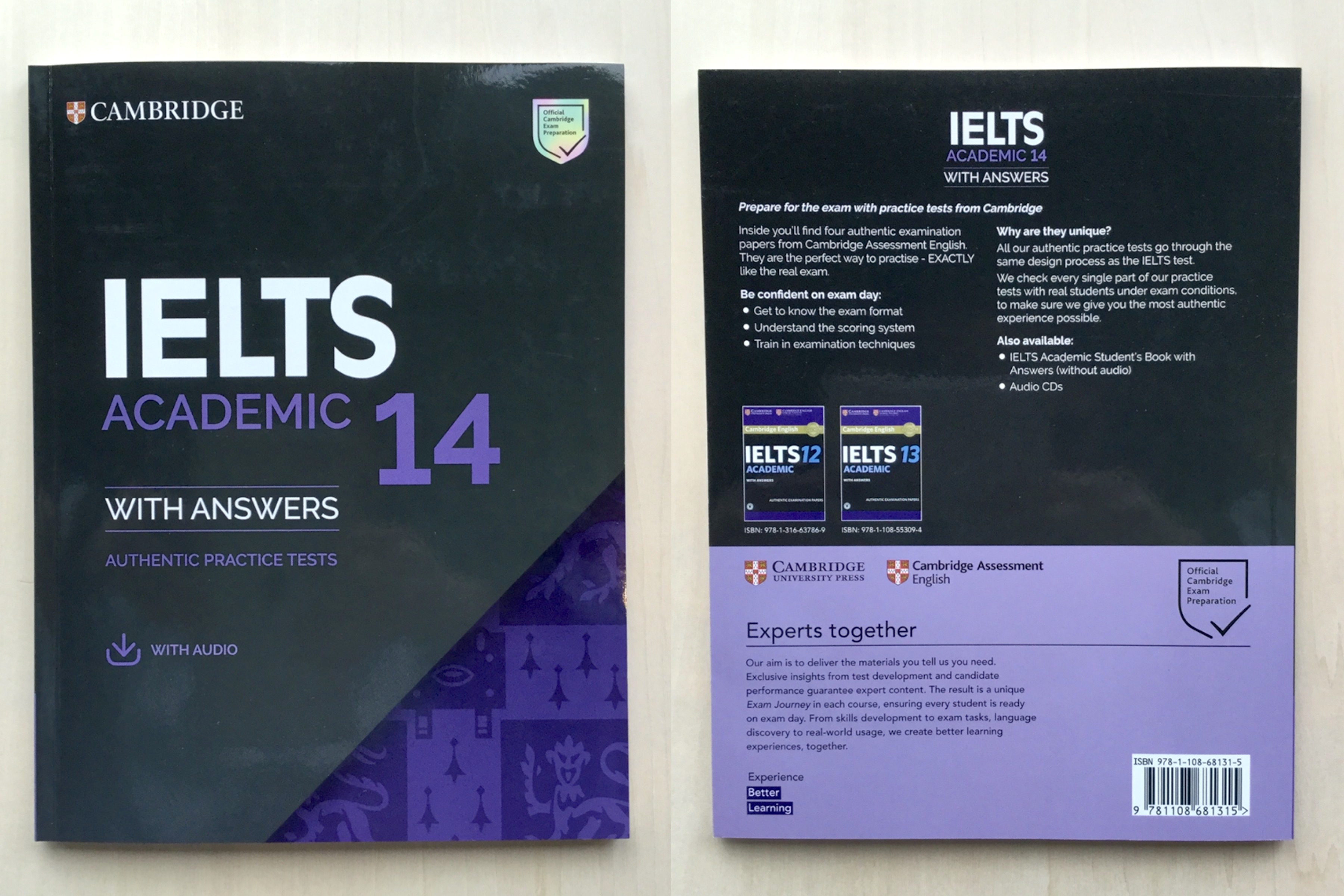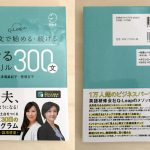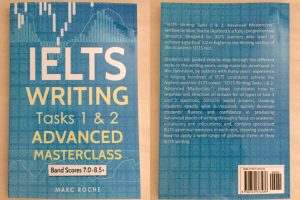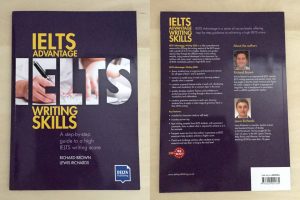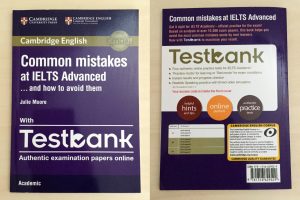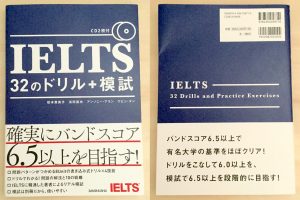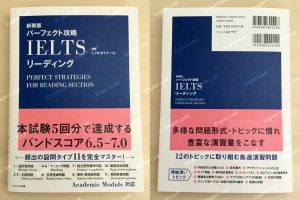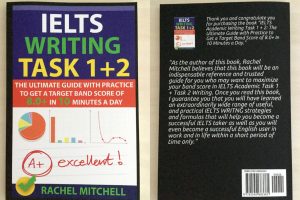IELTS参考書のマストアイテム!
本書は、IELTSのAcademicの問題集です。実際のテストと同様の形式であるため、実践的な演習を行えます。問題に加えて、スコアリングシステムも記載されているため、テクニックを身につける練習もできます。また、リスニングの音声も付属しています。

Contents
Introduction
Test 1
Test 2
Test 3
Test 4
Audioscripts
Listening and Reading answer keys
Sample answers for Writing tasks
Sample answer sheets
Acknowledgements
Introduction
The International English Language Testing System (IELTS) is widely recognized as a reliable means of assessing the language ability of candidates who need to study or work where English is the language of communication. These Practice Tests are designed to give future IELTS candidates an idea of whether their English is at the required level.
IELTS is owned by three partners: Cambridge Assessment English, part of the University of Cambridge; the British Council; IDP Education Pty Limited (through its subsidiary company, IELTS Australia Pty Limited). Further information on IELTS can be found on the IELTS website www.ielts.org.
WHAT IS THE TEST FORMAT?
IELTS consists of four components. All candidates take the same Listening and Speaking tests. There is a choice of Reading and Writing tests according to whether a candidate is taking the Academic or General Training module.
Academic For candidates wishing to study at undergraduate or postgraduate levels, and for those seeking professional registration.
General Training
For candidates wishing to migrate to an English-speaking country (Australia, Canada, New Zealand, UK), and for those wishing to train or study at below degree level.
The test components are taken in the following order:
| Listening 4 sections, 40 items, approximately 30 minutes |
||
| Academic Reading 3 sections, 40 items 60 minutes |
or | General Training Reading 3 sections, 40 items 60 minutes |
| Academic Writing 2 tasks 60 minutes |
or | General Training Writing 2 tasks 60 minutes |
| Speaking 11 to 14 minutes |
||
| Total Test Time 2 hours 44 minutes |
||
ACADEMIC TEST FORMAT
Listening
This test consists of four sections, each with ten questions. The first two sections are concerned with social needs. The first section is a conversation between two speakers and the second section is a monologue. The final two sections are concerned with situations related to educational or training contexts. The third section is a conversation between up to four people and the fourth section is a monologue.
A variety of question types is used, including: multiple choice, matching, plan/map/ diagram labelling, form completion, note completion, table completion, flow-chart completion, summary completion, sentence completion and short-answer questions.
Candidates hear the recording once only and answer the questions as they listen. Ten minutes are allowed at the end for candidates to transfer their answers to the answer sheet.
Reading
This test consists of three sections with 4 taken from journals, books, magazines and newspapers. The texts are on topics of general interest. At least one text contains detailed logical argument.
A variety of question types is used, including: multiple choice, identifying information (True/False/Not Given), identifying the writer’s views/claims (Yes/No/Not Given), matching information, matching headings, matching features, matching sentence endings, sentence completion, summary completion, note completion, table completion, flow-chart completion, diagram label completion and short-answer questions.
Writing
This test consists of two tasks. It is suggested that candidates spend about 20 minutes on Task 1, which requires them to write at least 150 words, and 40 minutes on Task 2, which requires them to write at least 250 words. Task 2 contributes twice as much as Task 1 to the Writing score.
Task 1 requires candidates to look at a diagram or some data (in a graph, table or chart) and to present the information in their own words. They are assessed on their ability to organise, present and possibly compare data, and are required to describe the stages of a process, describe an object or event, or explain how something works.
In Task 2, candidates are presented with a point of view, argument or problem. They are assessed on their ability to present a solution to the problem, present and justify an opinion, compare and contrast evidence and opinions, and to evaluate and challenge ideas, evidence or arguments.
Candidates are also assessed on their ability to write in an appropriate style. More information on assessing the Writing test, including Writing assessment criteria (public version), is available on the IELTS website.
Speaking
This test takes between 11 and 14 minutes and is conducted by a trained examiner. There are three parts:
Part 1
The candidate and the examiner introduce themselves. Candidates then answer general questions about themselves, their home/family, their job/studies, their interests and a wide range of similar familiar topic areas. This part lasts between four and five minutes.
Part 2
The candidate is given a task card with prompts and is asked to talk on a particular topic. The candidate has one minute to prepare and they can make some notes if they wish, before speaking for between one and two minutes. The examiner then asks one or two questions on the same topic.
Part 3
The examiner and the candidate engage in a discussion of more abstract issues which are thematically linked to the topic in Part 2. The discussion lasts between four and five minutes.
The Speaking test assesses whether candidates can communicate effectively in English. The assessment takes into account Fluency and Coherence, Lexical Resource, Grammatical Range and Accuracy, and Pronunciation. More information on assessing the Speaking test, including Speaking assessment criteria (public version), is available on the IELTS website.
HOW IS IELTS SCORED?
IELTS results are reported on a nine-band scale. In addition to the score for overall language ability, IELTS provides a score in the form of a profile for each of the four skills (Listening, Reading, Writing and Speaking). These scores are also reported on a nine-band scale. All scores are recorded on the Test Report Form along with details of the candidate’s nationality, first language and date of birth. Each Overall Band Score corresponds to a descriptive statement which gives a summary of the English language ability of a candidate classified at that level. The nine bands and their descriptive statements are as follows:
9 Expert User – Has fully operational command of the language: appropriate, accurate and fluent with complete understanding.
8 Very Good User – Has fully operational command of the language with only occasional unsystematic inaccuracies and inappropriacies. Misunderstandings may occur in unfamiliar situations. Handles complex detailed argumentation well.
7 Good User – Has operational command of the language, though with occasional inaccuracies, inappropriacies and misunderstandings in some situations. Generally handles complex language well and understands detailed reasoning.
6 Competent User – Has generally effective command of the language despite some inaccuracies, inappropriacies and misunderstandings. Can use and understand fairly complex language, particularly in familiar situations.
5 Modest User – Has partial command of the language, coping with overall meaning in most situations, though is likely to make many mistakes. Should be able to handle basic communication in own field.
4 Limited User – Basic competence is limited to familiar situations. Has frequent problems in understanding and expression. Is not able to use complex language.
3 Extremely Limited User — Conveys and understands only general meaning in very familiar situations. Frequent breakdowns in communication occur.
2 Intermittent User-No real communication is possible except for the most basic information using isolated words or short formulae in familiar situations and to meet immediate needs. Has great difficulty understanding spoken and written English.
1 Non User-Essentially has no ability to use the language beyond possibly a few isolated words.
0 Did not attempt the test – No assessable information provided.
MARKING THE PRACTICE TESTS
Listening and Reading
The answer keys are on pages 119–126.
Each question in the Listening and Reading tests is worth one mark.
Questions which require letter/Roman numeral answers
・For questions where the answers are letters or Roman numerals, you should write onlythe number of answers required. For example, if the answer is a single letter or numeral you should write only one answer. If you have written more letters or numerals than are required, the answer must be marked wrong.
Questions which require answers in the form of words or numbers
・Answers may be written in upper or lower case.
・Words in brackets are optional – they are correct, but not necessary.
・Alternative answers are separated by a slash (/).
・If you are asked to write an answer using a certain number of words and/or (a) number(s), you will be penalised if you exceed this. For example, if a question specifies an answer using NO MORE THAN THREE WORDS and the correct answer is ‘black leather coat’, the answer ‘coat of black leather’ is incorrect.
・In questions where you are expected to complete a gap, you should only transfer the necessary missing word(s) onto the answer sheet. For example, to complete ‘in the ..’ where the correct answer is ‘morning’, the answer in the morning’ would be incorrect.
・All answers require correct spelling (including words in brackets).
・Both US and UK spelling are acceptable and are included in the answer key.
・All standard alternatives for numbers, dates and currencies are acceptable.
・All standard abbreviations are acceptable.
・You will find additional notes about individual answers in the answer key.
Writing
The sample answers are on pages 127-136. It is not possible for you to give yourself a mark for the Writing tasks. We have provided sample answers (written by candidates), showing their score and the examiner’s comments. These sample answers will give you all insight what is required for the Writing test.
HOW SHOULD YOU INTERPRET YOUR SCORES?
At the end of each Listening and Reading answer key you will find a chart which will help you assess whether, on the basis of your Practice Test results, you are ready to take the IELTS test.
In interpreting your score, there are a number of points you should bear in mind. Your performance in the real IELTS test will be reported in two ways: there will be a Band Score from 1 to 9 for each of the components and an Overall Band Score from 1 to 9, which is the average of your scores in the four components. However, institutions considering your application are advised to look at both the Overall Band Score and the Bands for each component in order to determine whether you have the language skills needed for a particular course of study. For example, if your course involves a lot of reading and writing, but no lectures, listening skills might be less important and a score of 5 in Listening might be acceptable if the Overall Band Score was 7. However, for a course which has lots of lectures and spoken instructions, a score of 5 in Listening might be unacceptable even though the Overall Band Score was 7.
Once you have marked your tests, you should have some idea of whether your listening and reading skills are good enough for you to try the IELTS test. If you did well enough in one component, but not in others, you will have to decide for yourself whether you are ready to take the test.
The Practice Tests have been checked to ensure that they are of approximately the same level of difficulty as the real IELTS test. However, we cannot guarantee that your score in the Practice Tests will be reflected in the real IELTS test. The Practice Tests can only give you an idea of your possible future performance and it is ultimately up to you to make decisions based on your score.
Different institutions accept different IELTS scores for different types of courses. We have based our recommendations on the average scores which the majority of institutions accept. The institution to which you are applying may, of course, require a higher or lower score than most other institutions.
Further information
For more information about IELTS or any other Cambridge Assessment English examination, write to:
Cambridge Assessment English
The Triangle Building
Shaftesbury Road
Cambridge
CB2 8EA
https://support.cambridgeenglish.org
http://www.ielts.org

